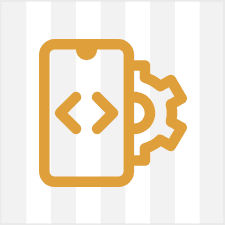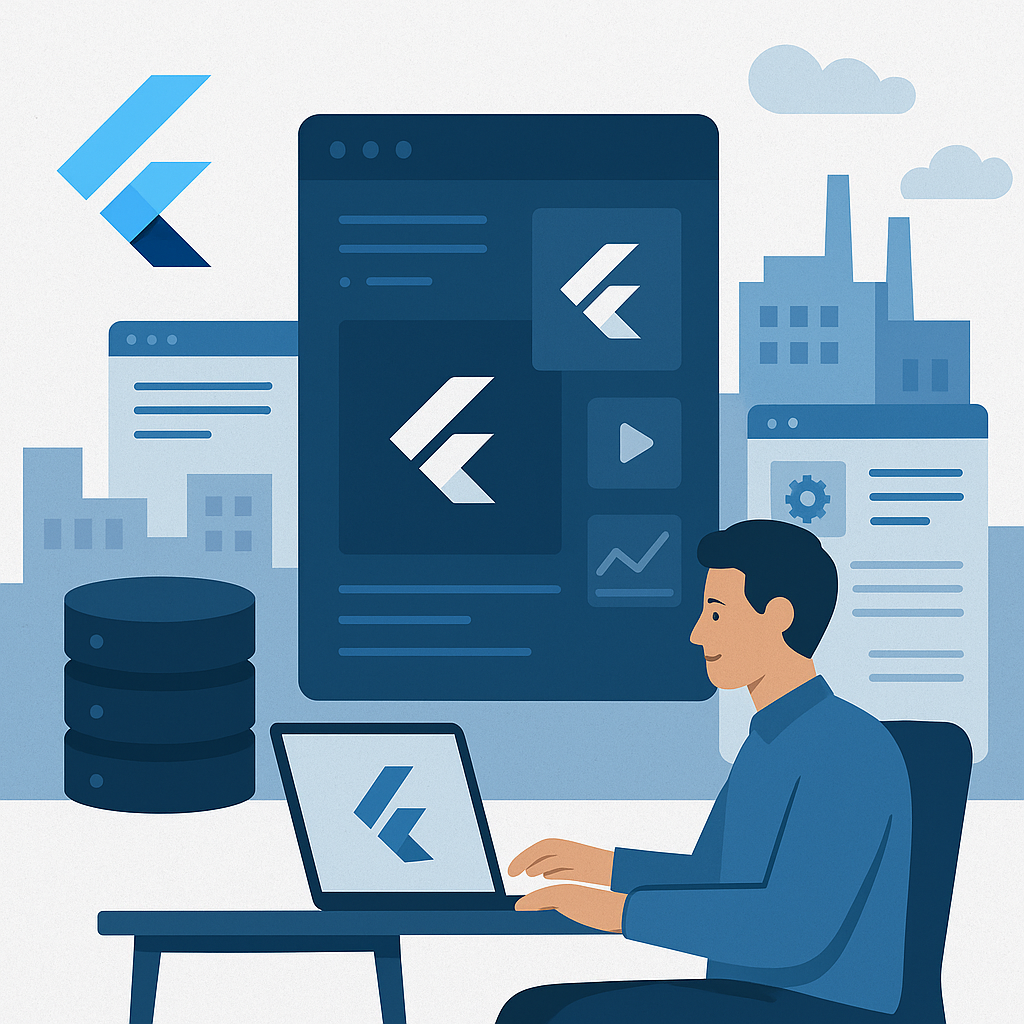- Our Work
-
-
PORTFOLIO
OTHERS
-
-
- Services
-
- How We Work
-
- Resources
-
- About Us
-
- Contact Us
- Let’s Talk
In recent years, Flutter has emerged as a front-runner in the cross-platform development world. Initially adopted by startups and indie developers, Flutter has now caught the attention of large enterprises looking to reduce time-to-market, unify development efforts, and future-proof their mobile application architecture.
But the question remains:
Is Flutter truly ready for enterprise-grade, large-scale production apps?
In this post, we’ll explore that question from a technical, business, and strategic perspective—backed by real-world examples, key architectural considerations, and a look at Flutter’s 2025 maturity state.
What Is Flutter and Why Should Enterprises Care?
Flutter is an open-source UI software development kit (SDK) created by Google, allowing developers to build natively compiled applications for mobile, web, and desktop from a single codebase. It uses the Dart programming language and provides rich, customizable widgets for building highly responsive UIs.
Key Enterprise Advantages:
Unified Codebase for iOS, Android, Web, and Desktop
Fast Development Cycles with Hot Reload
Customizable UI Components
Strong Backing from Google and a growing ecosystem
High Performance via native ARM code compilation
These features are compelling for enterprises looking to streamline mobile teams, reduce operational costs, and deliver consistent cross-platform experiences.
The State of Flutter in 2025: Maturity and Ecosystem
As of 2025, Flutter has grown into a mature, enterprise-ready framework. The ecosystem includes:
Flutter 3.16+: Now includes advanced web and desktop support.
Dart 3.x: Offers improved sound null safety, concurrency, and performance enhancements.
Ecosystem Growth: Thousands of maintained packages on pub.dev.
Strong Community: Over 160k stars on GitHub and increasing enterprise contributions.
Enterprise players such as Google Pay, BMW, eBay Motors, Toyota, Alibaba, and Abbott have successfully deployed Flutter in production apps with millions of users.
Key Considerations for Large-Scale Flutter Apps
✅ 1. Scalability
Flutter supports modular architecture, clean code separation, and state management techniques (e.g., BLoC, Riverpod, Provider) that allow large teams to collaborate without code conflicts.
Tip: Use DDD (Domain-Driven Design) combined with Riverpod or BLoC for scalable Flutter architecture.
✅ 2. Team Structure and Talent Pool
While Dart is less popular than JavaScript or Kotlin, the learning curve is low. With clear onboarding practices and internal documentation, engineering teams can quickly ramp up.
Training a React Native team in Flutter typically takes < 2 weeks.
✅ 3. Integration with Enterprise Systems
Flutter supports native platform integration using platform channels. You can:
Connect to REST APIs, GraphQL, and WebSockets
Integrate native SDKs (via Swift, Kotlin, or C++)
Use biometric authentication, deep linking, and advanced networking
For government and secure systems, Flutter’s open-source model allows full code auditing and offline-first architecture.
✅ 4. Performance
Flutter apps compile to native ARM code, offering performance on par with native Swift or Kotlin apps. The Skia rendering engine ensures 60fps (and 120fps on supported devices) with minimal jank.
In benchmark tests, Flutter apps often outperform React Native and hybrid frameworks like Ionic.
✅ 5. Maintenance and Future-Proofing
Google continues to invest heavily in Flutter and Dart. With an open governance model, strong community, and enterprise adoption, the framework is unlikely to face stagnation. Long-term support (LTS) versions and well-documented upgrade paths make maintenance reliable.
Common Enterprise Concerns (and Responses)
| Concern | Response |
|---|---|
| Is Dart too niche? | Dart is easy to learn and backed by Google. It’s optimized for UI development and is gaining traction in web and backend as well. |
| What about app size? | With modern build tools and obfuscation, production builds are comparable in size to native apps. |
| Can Flutter apps be accessible? | Yes. Flutter includes accessibility features like screen reader support, semantic labels, and internationalization. |
| Is Flutter secure enough? | Flutter supports encrypted storage, secure communication, and code obfuscation. Proper architecture ensures compliance with enterprise security protocols. |
Real-World Case Studies
1. Toyota
Developed an in-car infotainment system using Flutter for high-performance, real-time experiences.
2. Google Pay
Migrated to Flutter to unify their development across multiple regions and platforms.
3. eBay Motors
Rebuilt their app using Flutter to achieve faster iteration and improved performance metrics.
Conclusion: Is Flutter Ready for Enterprise Production?
Yes — Flutter is more than ready.
Its unified codebase, native performance, robust ecosystem, and enterprise-grade capabilities make it an excellent choice for large-scale production apps.
For CTOs and engineering leaders, Flutter offers a practical solution to modern development challenges:
Reduced overhead
Faster time-to-market
Consistent brand experiences across platforms
If you’re planning your next enterprise app or considering a digital transformation strategy, Flutter should be on your shortlist.
Ready to Scale Your Enterprise App with Flutter?
At Finally Free Productions (FFP), we specialize in building secure, scalable, and beautifully engineered Flutter applications for enterprise clients. Whether you’re migrating from native codebases or starting a new project, we’ll help you leverage Flutter to its full potential.
📩 Contact us today to schedule a free Flutter consultation.
 All
All AI & ML
AI & ML Healthcare
Healthcare Education
Education Games
Games Fitness
Fitness Business
Business Webapps
Webapps Websites
Websites More
More Startup
Startup Web3 Development
Web3 Development Capabilities
Capabilities Game Development
Game Development Website Development
Website Development Prototyping Services
Prototyping Services Mobile App Development
Mobile App Development Client Dashboard
Client Dashboard Design Process
Design Process IP Protection
IP Protection Project Management
Project Management Working with Finally Free
Working with Finally Free FAQ
FAQ How to Videos
How to Videos About FFP
About FFP Meet The Team
Meet The Team Press
Press